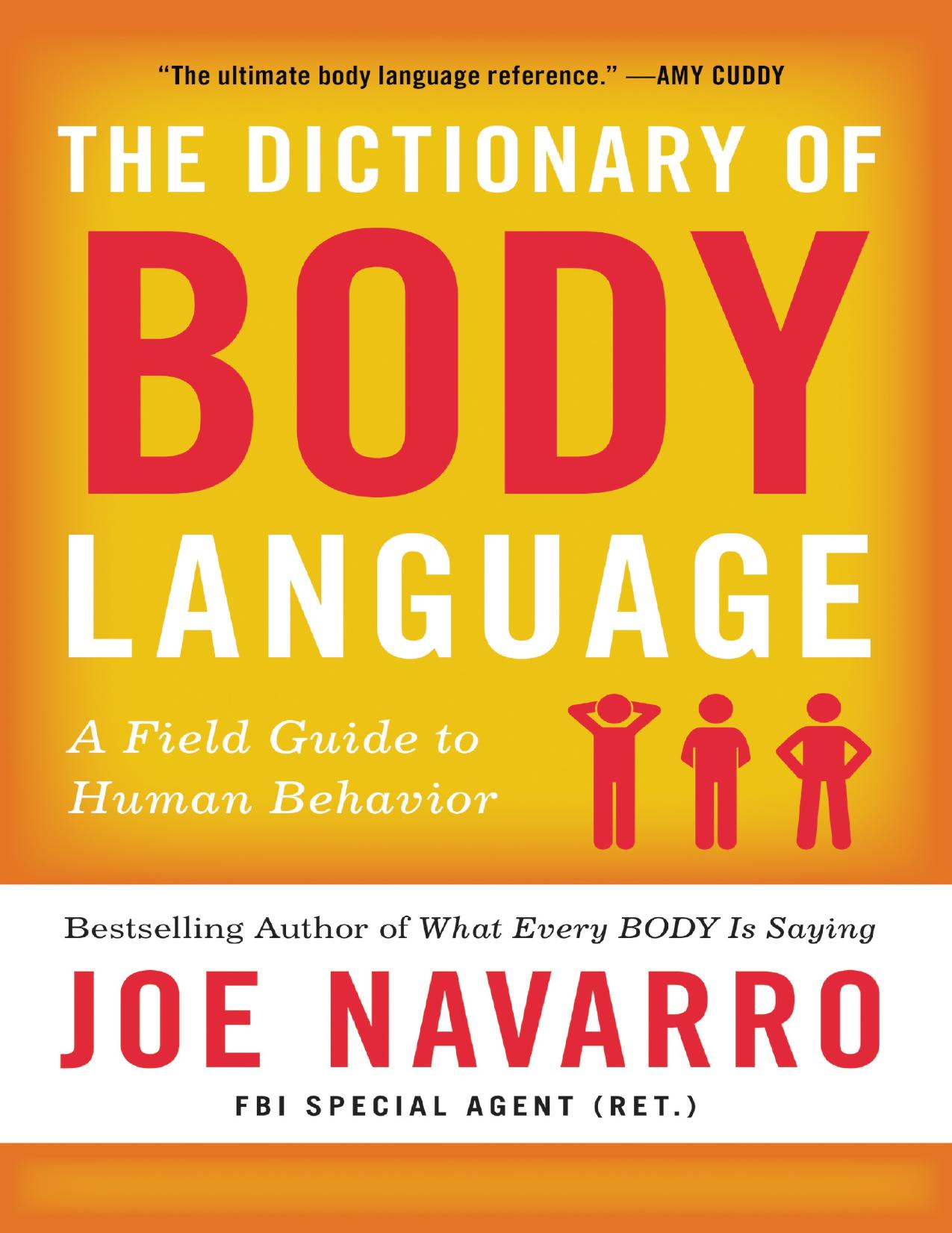The Dictionary of Body Language by Joe Navarro

Author:Joe Navarro
Language: eng
Format: epub, mobi, pdf
Published: 2018-09-17T16:00:00+00:00
The Arms
Our arms not only protect us, balance us, and help us carry things, they also communicate extremely well. From our self-hugs when we are stressed, to the raised arms of a person who just came in first place, to the outward reach of a child seeking a loving hug, our arms are continually assisting us, warming us, attending to others for us, and communicating our needs as well as how we feel—far more than we realize.
HUGGING —Hugging, in all its forms, is universally indicative of closeness, good feelings, warmth, and cooperation. While in some cultures a brief social hug, an abrazo (in Latin America), can serve as a greeting gesture similar to shaking hands, how it is performed can indicate how the participants feel about each other. Consider American athletes and movie stars giving each other bro hugs. As an observer, I always note the hug and the facial expressions to give me a reliable sense of how two individuals really feel about each other.
ANIMATED GESTURES —Animated gestures reflect our emotions and also get us noticed. Broad gestures are powerful displays when we’re speaking and are essential to dynamic communication. In many cultures, emphasis requires exaggerated gestures. To an outsider, people making such gestures might look like they’re about to fight when in fact they are just being emphatic.
GESTURING WHILE SPEAKING —I often get the question “Why do we gesticulate?” Gestures are considered an integral part of communication. Gestures help us to get and maintain attention as well as to highlight important points. Gestures even help the person speaking by facilitating greater flexibility in speaking and even with the recall of words. Gestures affect how our message is received and how much of it other people remember. When gestures echo the message, the message is potentiated. We want to be seen gesturing as we speak. If you look at successful TED Talks, you will notice that gestures are an essential element utilized by the best speakers.
ARMS AGAINST BODY, HANDS FLEXED —This is often referred to as restrained elation. When people are pleased with themselves but are trying not to show it, they might hold their arms against their body and then lift their hands at the wrist so the wrist is almost at a ninety-degree angle, with the palms facing down. This can also take place when people are trying to control their excitement and don’t want to be noticed. The behavior may be accompanied by a rise in the shoulders and of course facial displays of joy.
ELATION/TRIUMPH DISPLAYS —Displays of elation or triumph tend to be gravity-defying—in other words, the gesture is made upward or outward away from the body. Sometimes we actually jump out of our seats into the air with our arms and fingers extended. Positive emotions drive gravity-defying gestures, and so around the world triumph displays at sporting events tend to be similar: arms up in the air.
ARMS HELD BEHIND BACK —The regal stance is performed by placing the arms and hands behind the back.
Download
The Dictionary of Body Language by Joe Navarro.mobi
The Dictionary of Body Language by Joe Navarro.pdf
This site does not store any files on its server. We only index and link to content provided by other sites. Please contact the content providers to delete copyright contents if any and email us, we'll remove relevant links or contents immediately.
We Need to Talk by Celeste Headlee(5085)
Pre-Suasion: A Revolutionary Way to Influence and Persuade by Robert Cialdini(3607)
Captivate by Vanessa Van Edwards(3416)
I Love You But I Don't Trust You by Mira Kirshenbaum(3386)
Goodbye Paradise(3126)
How to Win Friends and Influence People in the Digital Age by Dale Carnegie & Associates(3035)
How to win friends and influence people by Dale Carnegie(2991)
Surrounded by Idiots by Thomas Erikson(2644)
The Hard Questions by Susan Piver(2631)
Fluent Forever: How to Learn Any Language Fast and Never Forget It by Gabriel Wyner(2566)
The Dictionary of Body Language by Joe Navarro(2524)
The Story Factor: Inspiration, Influence, and Persuasion through the Art of Storytelling by Annette Simmons(2301)
Just Listen by Sarah Dessen(2256)
How to Be Yourself by Ellen Hendriksen(2023)
The Power of Moments by Chip Heath & Dan Heath(1957)
Behave: The Biology of Humans at Our Best and Worst by Robert M. Sapolsky(1918)
How to Make Small Talk by Melissa Wadsworth(1874)
Not Nice: Stop People Pleasing, Staying Silent, & Feeling Guilty... And Start Speaking Up, Saying No, Asking Boldly, And Unapologetically Being Yourself by Dr Aziz Gazipura PsyD(1853)
The Small BIG Small Changes that Spark Big Influence by Steve Martin & Noah Goldstein & Robert Cialdini(1610)
